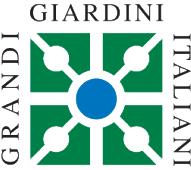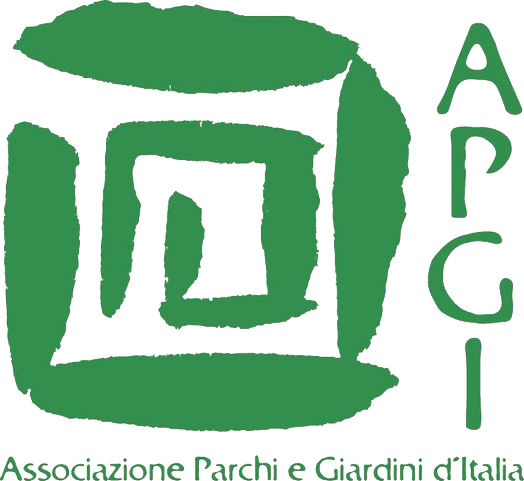Check the closing dates before planning your visit.
Art in the Pojega Garden
Villa Rizzardi
Since the 16th century, the gentle hills of Negrar have attracted great interest from noble families of Veneto and Lombardy, who purchased agricultural estates in the area and built splendid country residences.
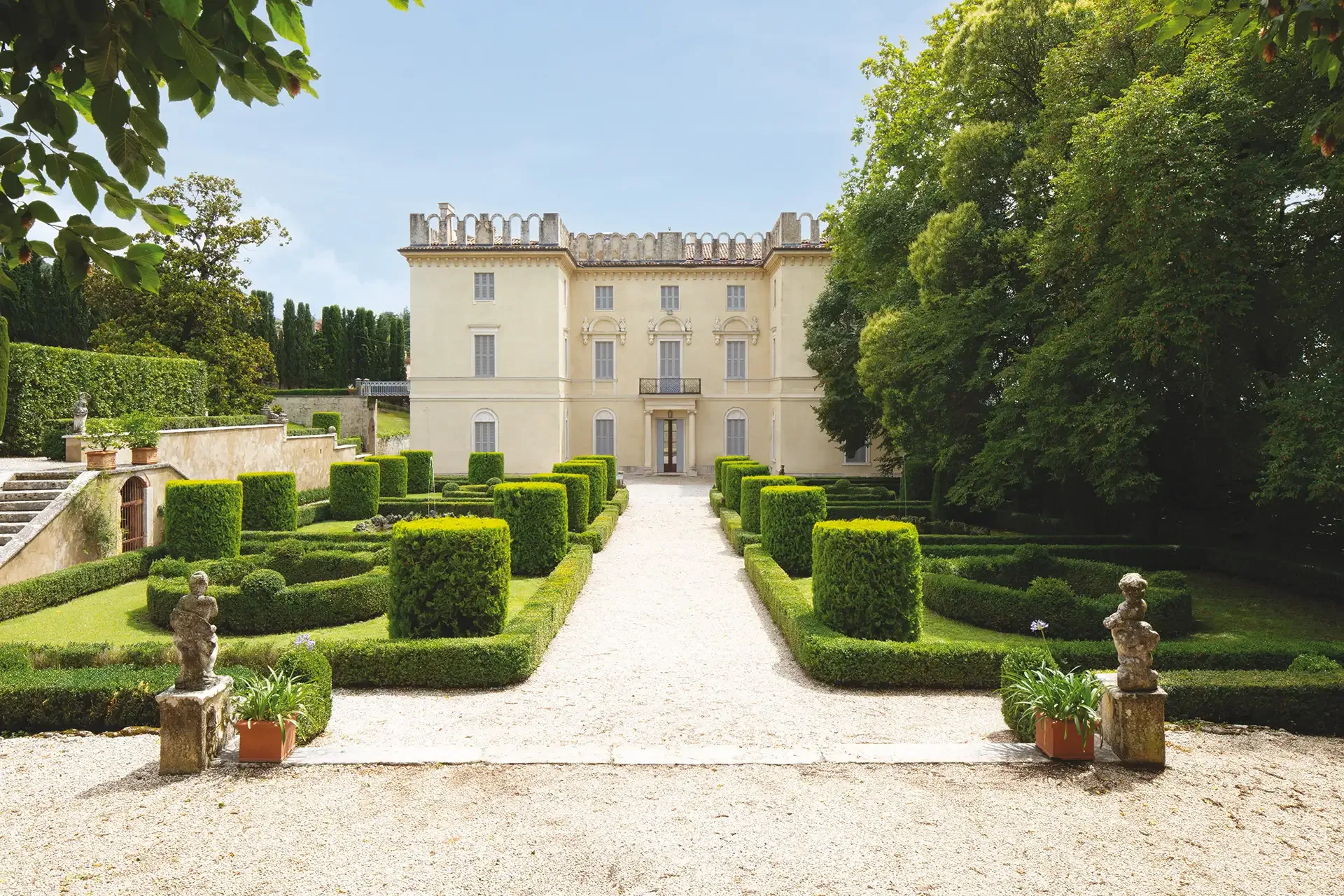
A 19th-century restoration overseen by architect Filippo Messedaglia
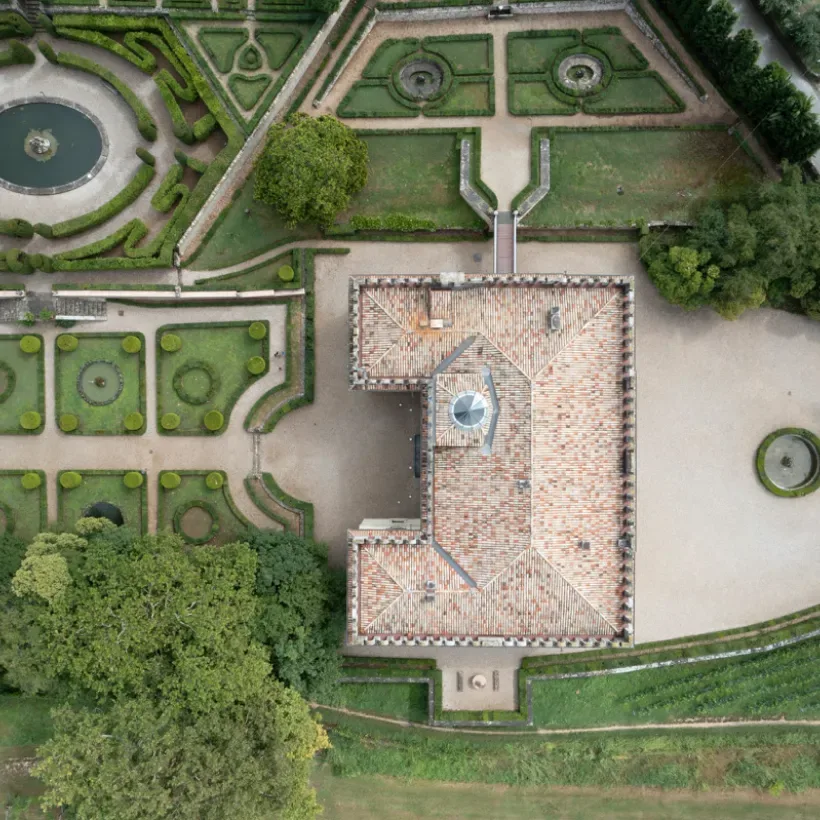
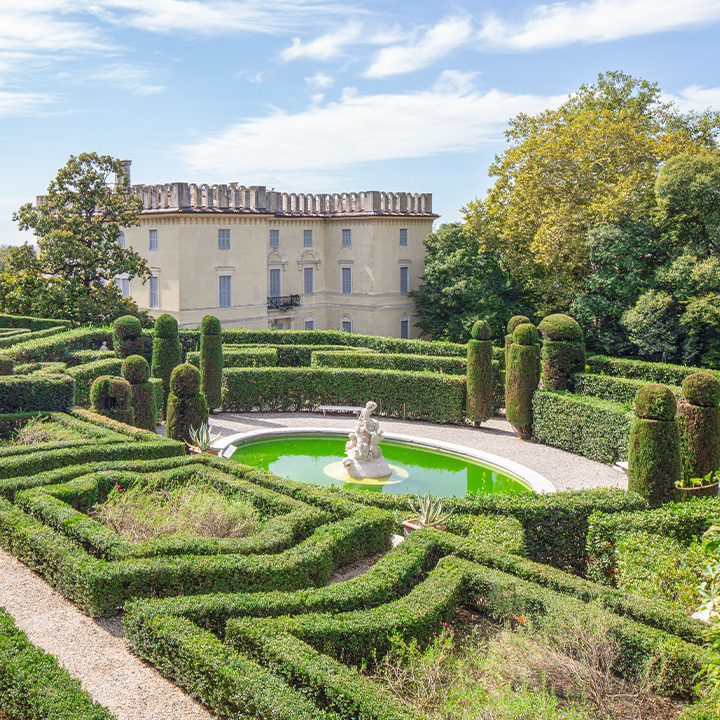
The villa, characterized by its horseshoe-shaped geometric design, opens onto the Garden of Pojega through an inner courtyard. From here, the view stretches across the parterre and continues seamlessly toward the picturesque Viale dei Carpini, creating a visual perspective that appears endless.
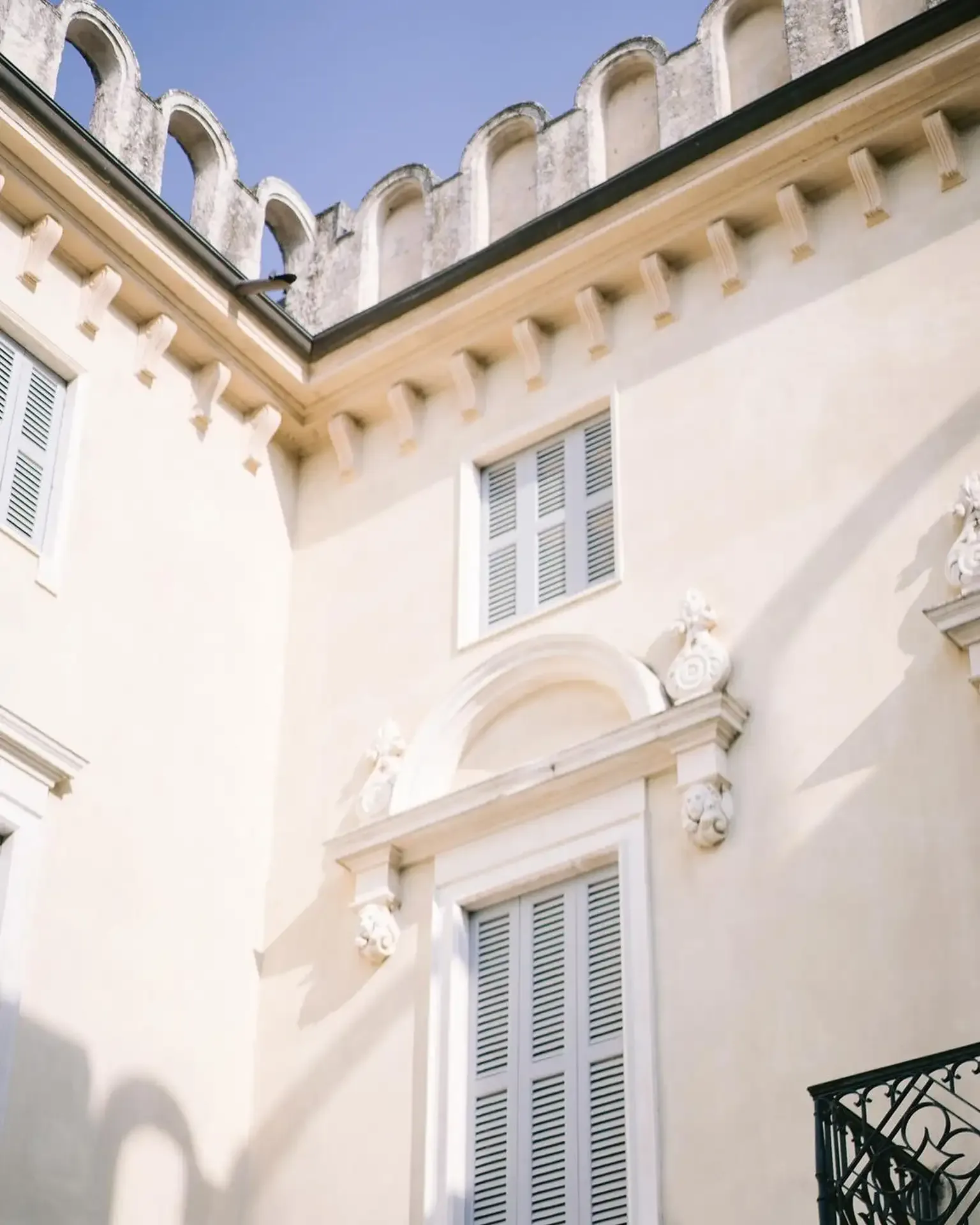
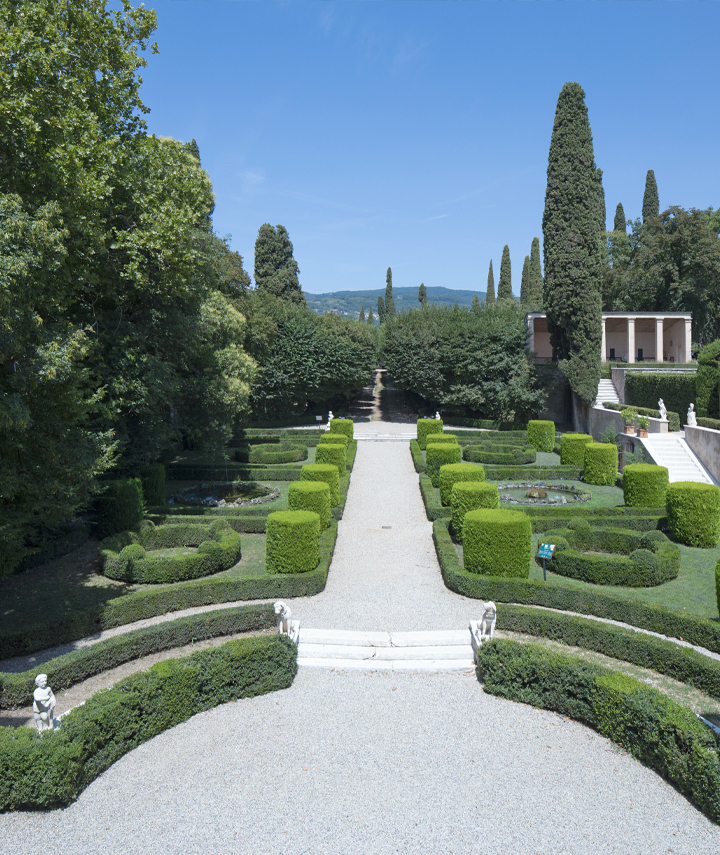
A Residence for Artists
Villa Rizzardi has been home to significant artistic figures: during World War II, architect Piero Gazzola sought refuge here, safeguarding works from the Castelvecchio Museum in Verona.
More recently, Spanish sculptor Miguel Berrocal made it his residence and studio for over thirty years, transforming it into a hub of creativity frequented by international artists.
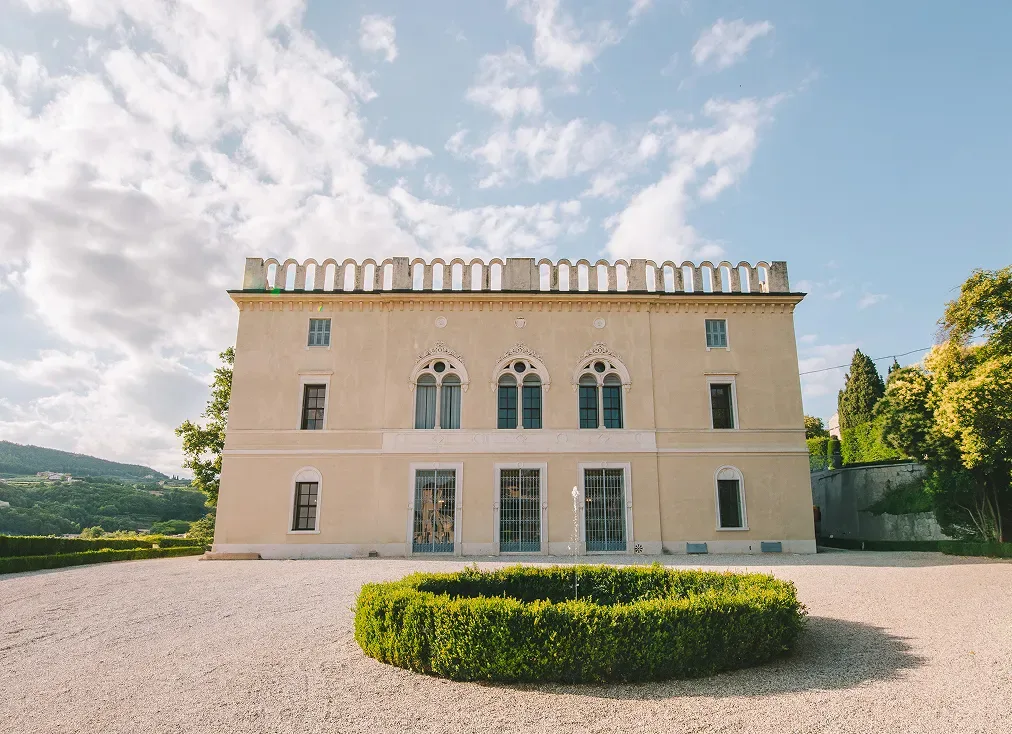
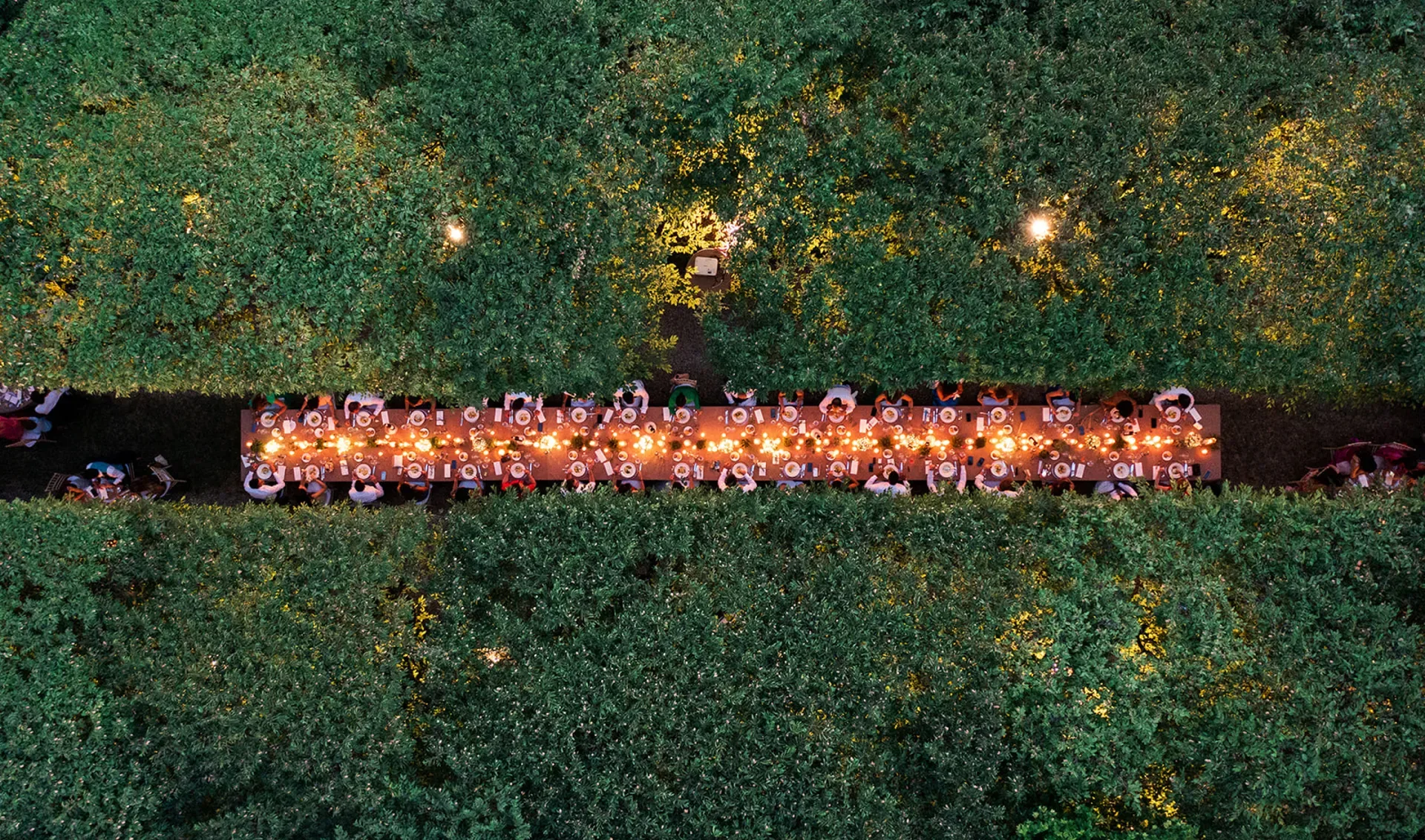
A Setting for Unique Events
Villa Rizzardi and the Garden of Pojega are now the perfect venue for hosting unforgettable events and ceremonies, offering spacious and scenic settings that can be customized to create truly unique experiences.
The Sculptures
Complementing the "green architecture," the Garden of Pojega features more than 60 statues attributed to Pietro Muttoni, a renowned artist from Vicenza of that era. Crafted from local limestone, the sculptures of classical deities and exotic beasts bring life to the tree-lined backdrops and pathways, enriching this architectural gem of Italian Neoclassicism with layers of symbolism.
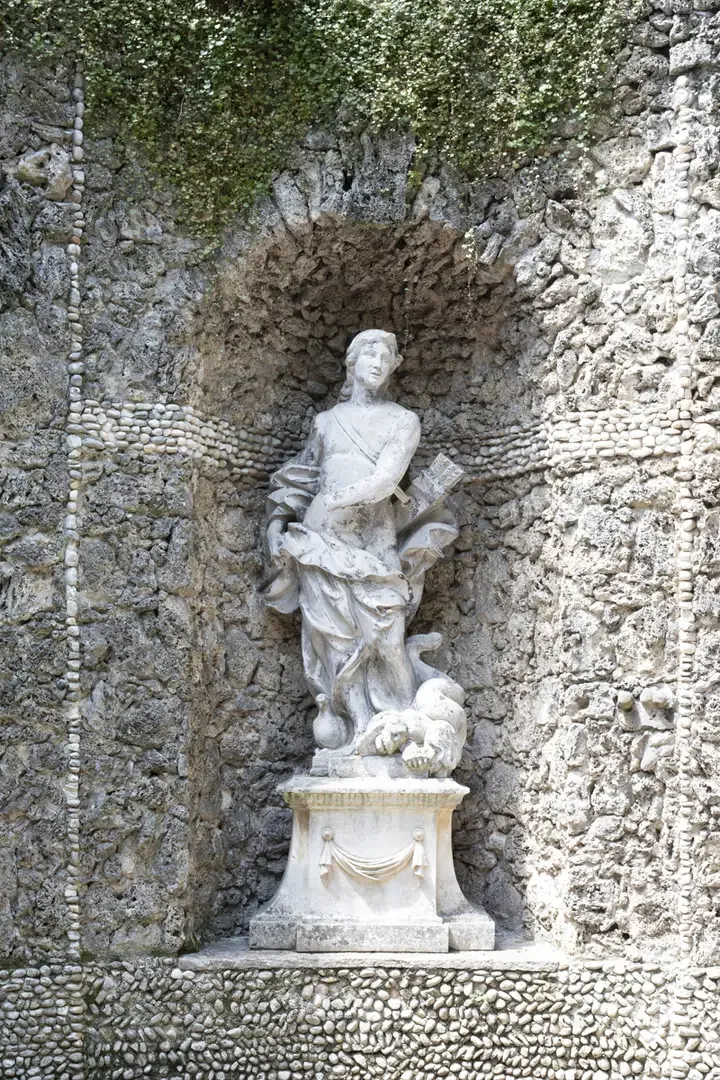
Apollo, god of the Sun and music, depicted with a quiver over his shoulder and the python he killed at his feet.
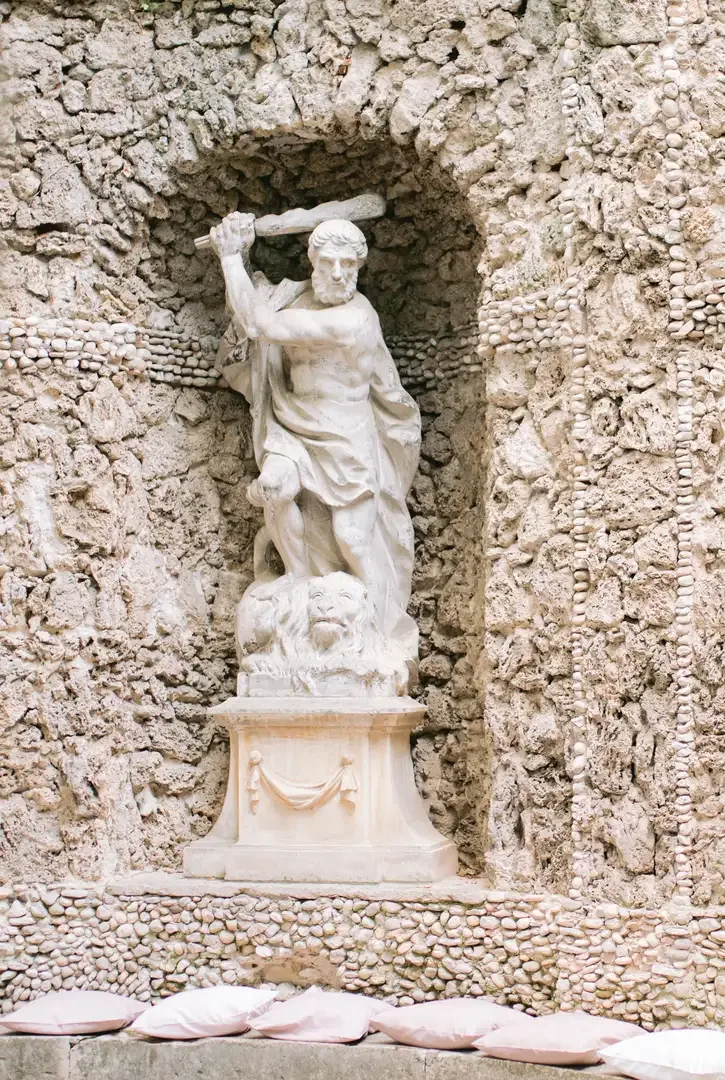
Hercules, a bearded man with muscular body, the hero par excellence, wielding his club over a lion subdued at his feet.
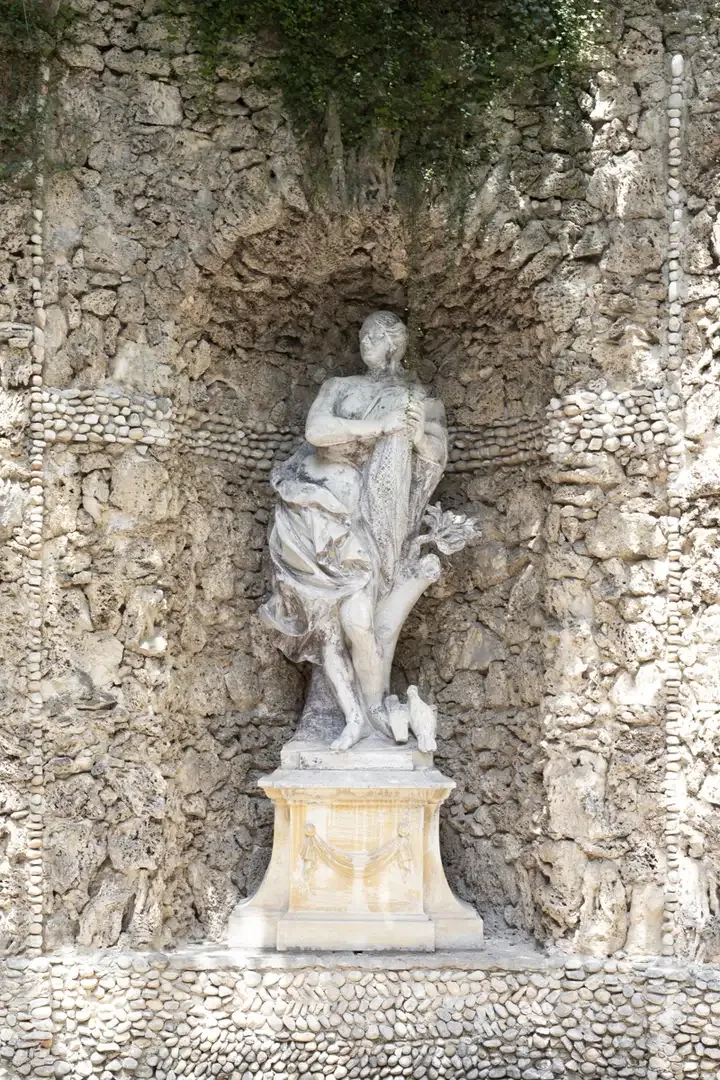
Venus, the goddess of love, depicted nude with two doves, a myrtle branch, and net over her shoulder.
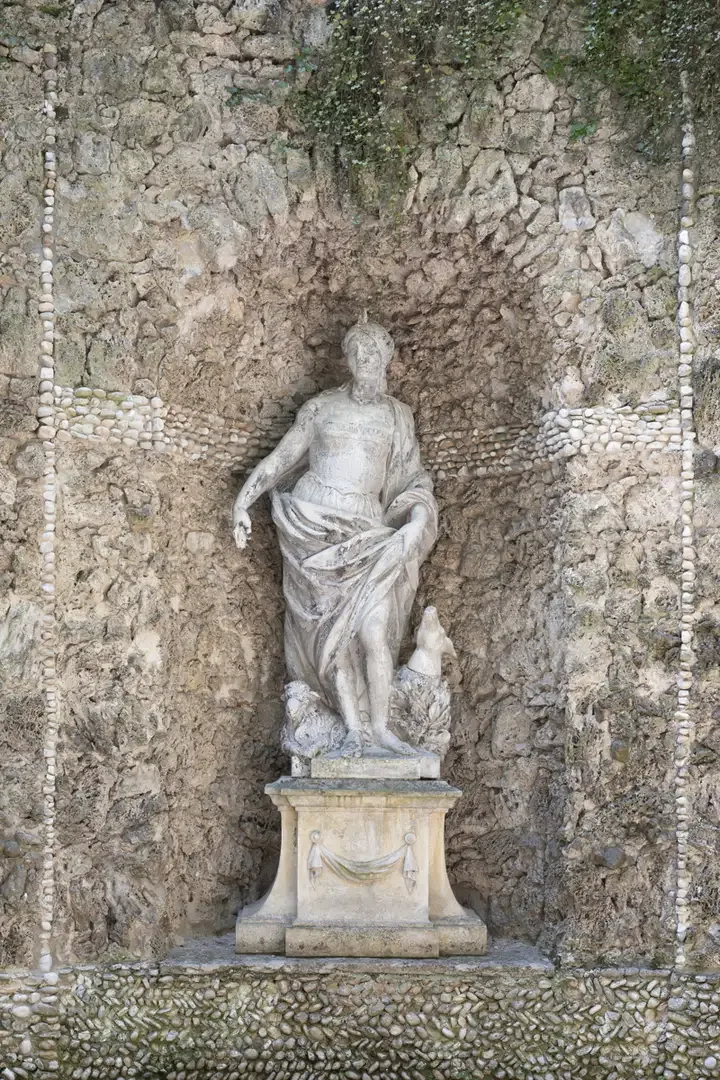
Diana, the goddess of the hunt, with a waxing half moon on her head, accompanied by a dog and a sheep.
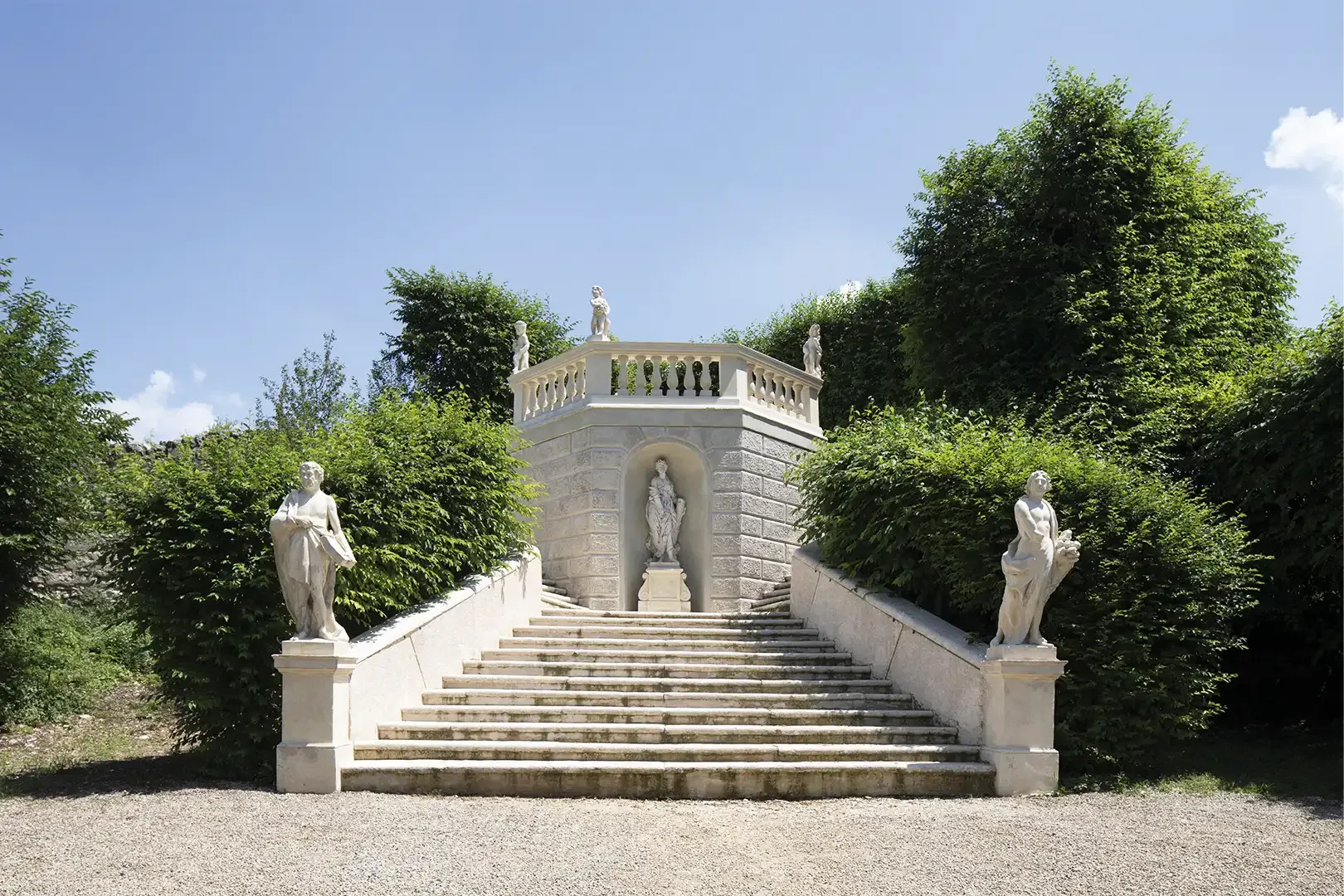
The Belvedere consists of an octagonal structure positioned at the top of a grand staircase that splits to embrace the turret along its sides. Located at the highest point of the Garden, it is reached by ascending the "Viale delle Virtù," symbolized by the three statues that adorn it: Wisdom, Abundance, and Harmony.
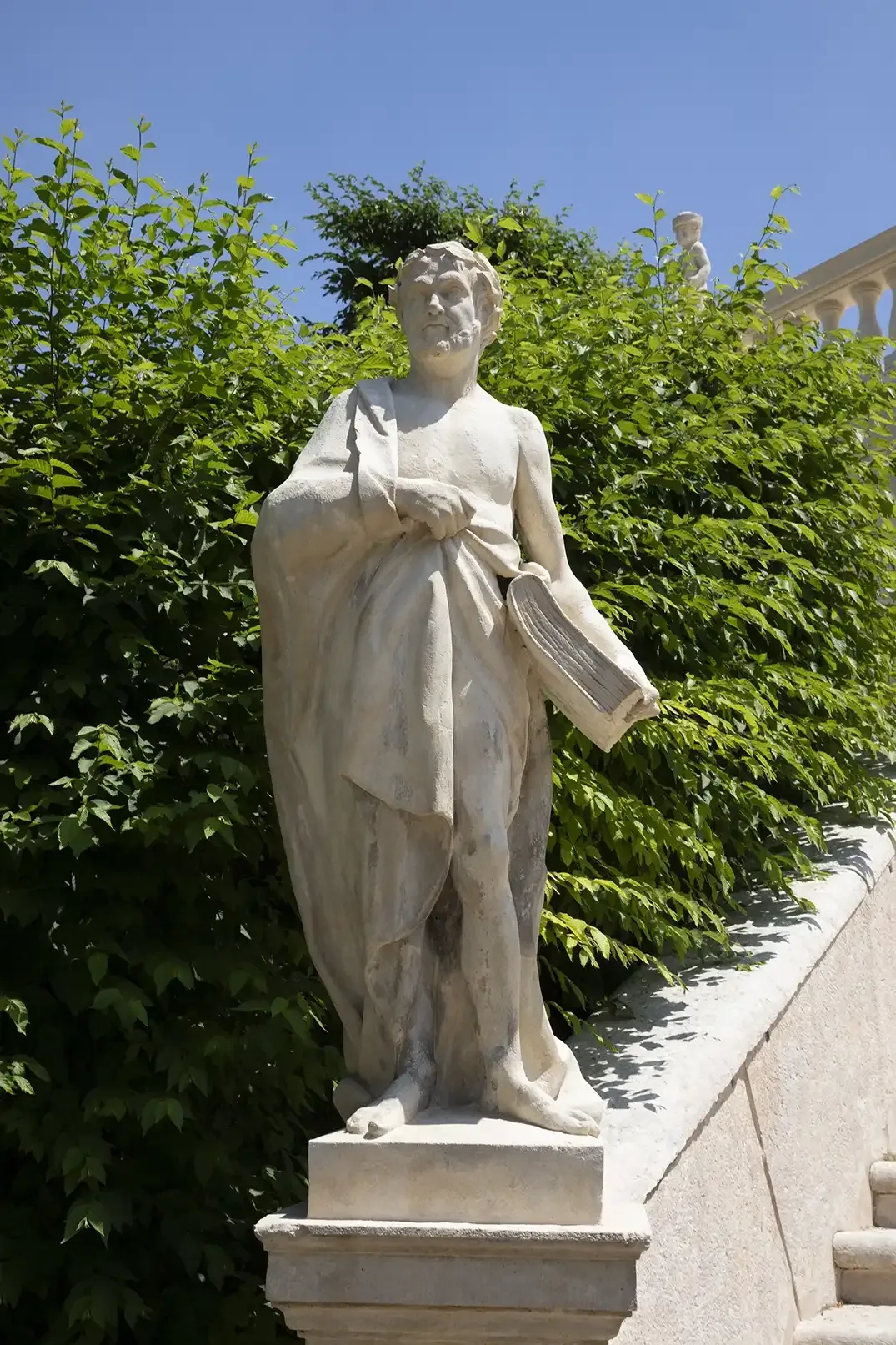
On the left, an adult man wearing a long tunic, holding a book, and crowned with leaves represents the virtue of Wisdom.
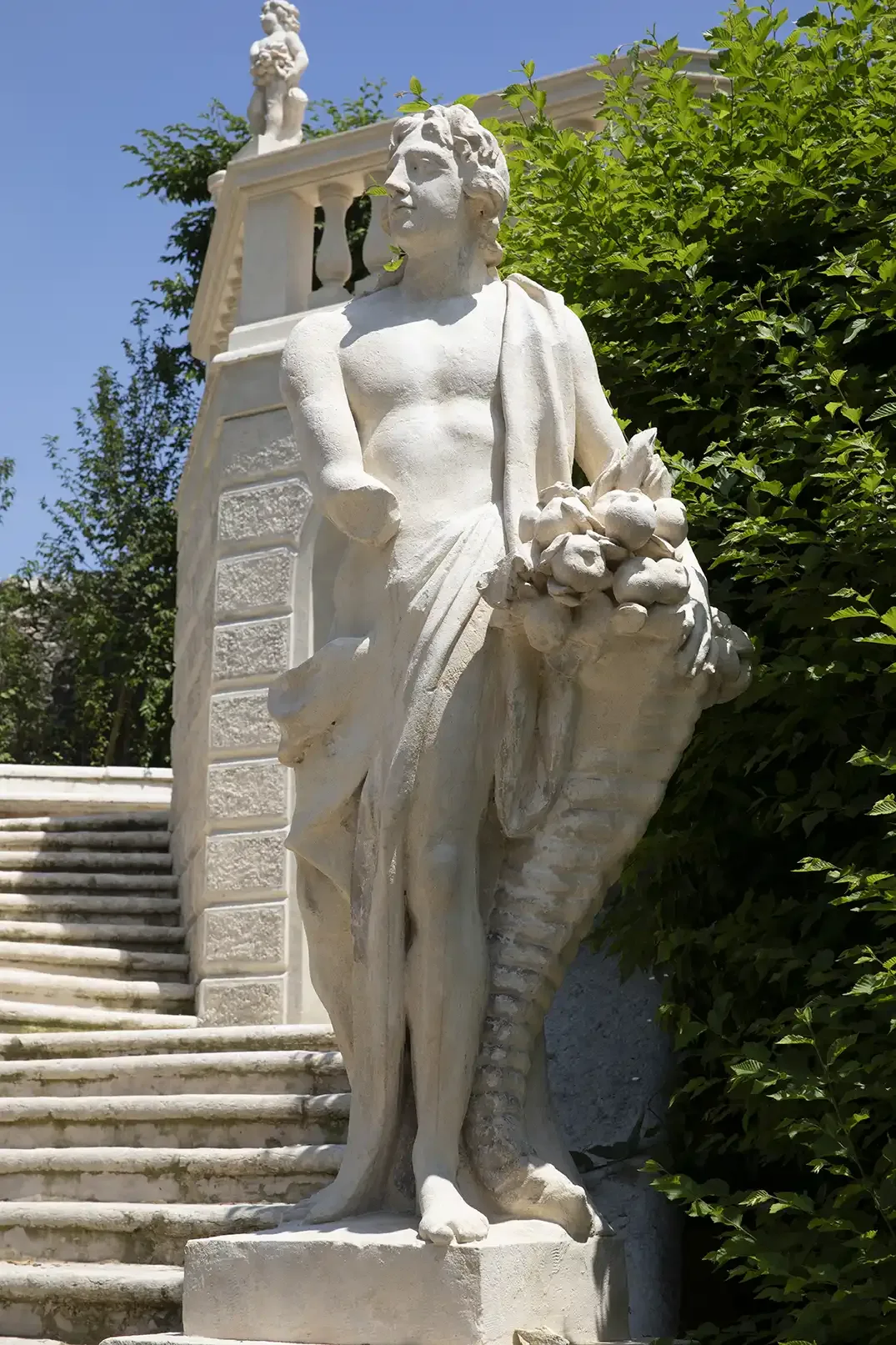
On the right, a young man with a crown of sprigs on the head and holding a cornucopia probably personifies Abundance.
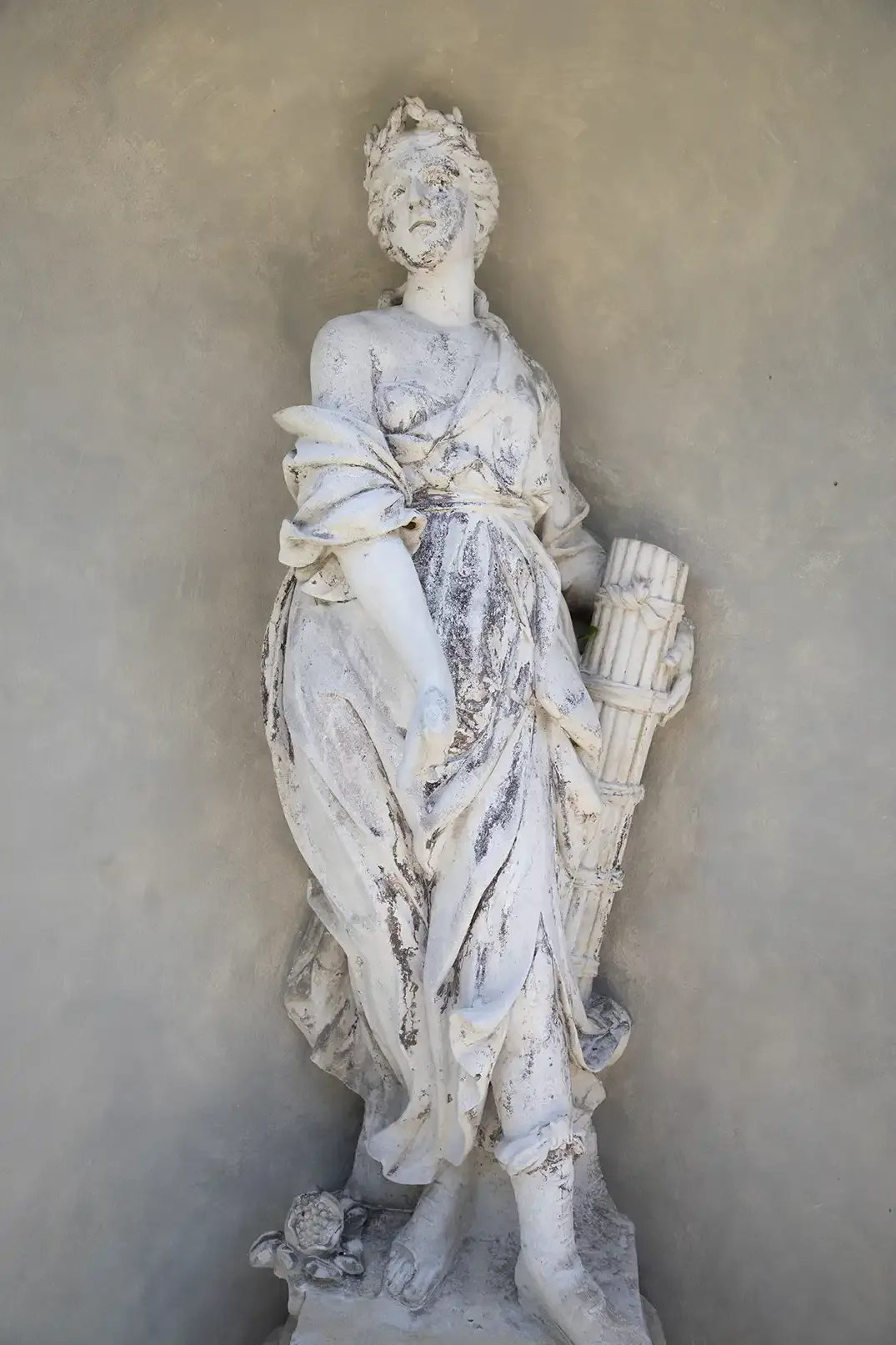
At the top of the stairs, a niche holds a noblewoman crowned with laurel, with a pomegranate and a bundle of arrows tied with a ribbon. This is Harmony.
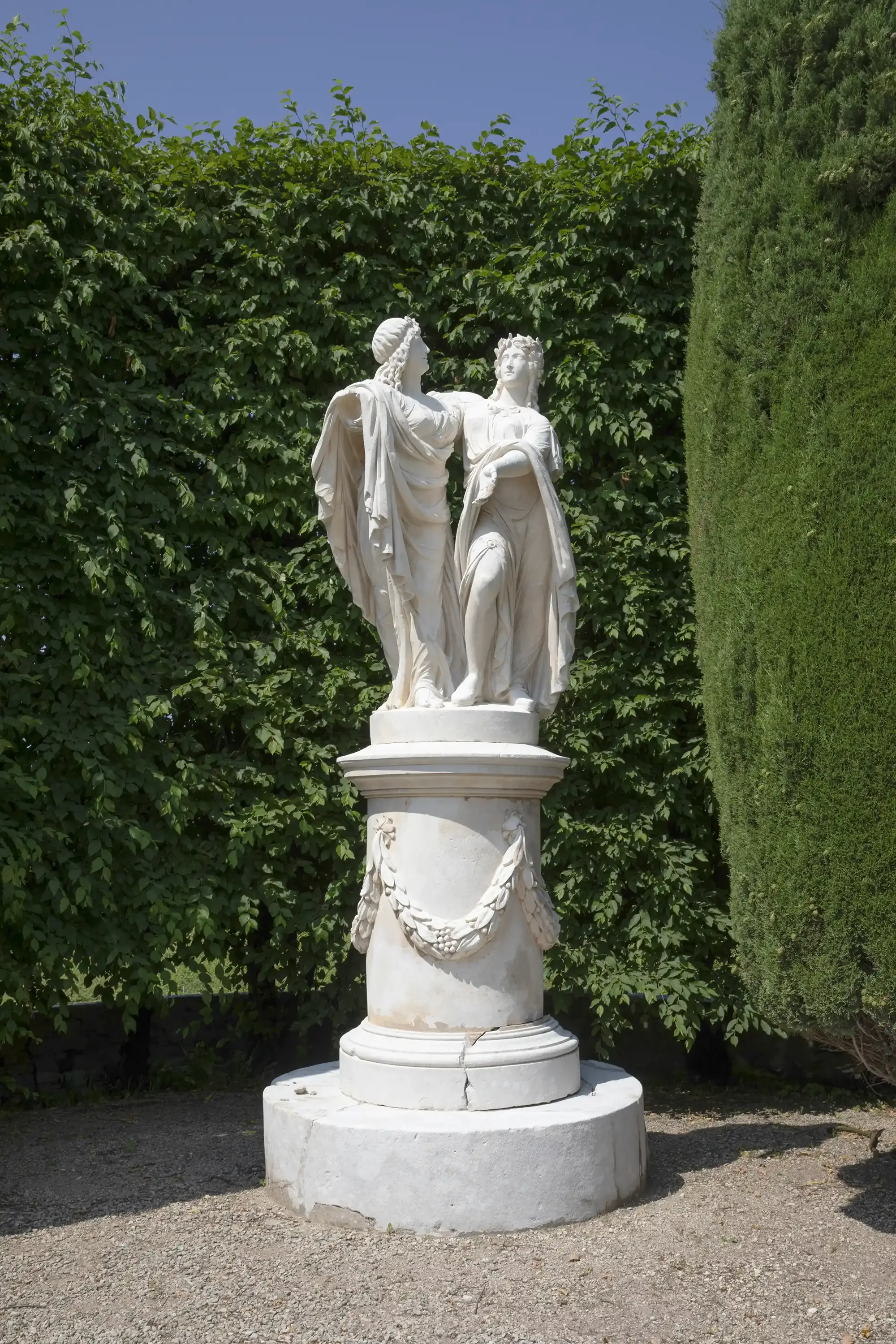
Entering the theatre, we find the scenic space to the left. At the back, there is a large sculptural group probably depicting the two muses of theatre, Melpomene (tragedy) and Thalia (comedy).
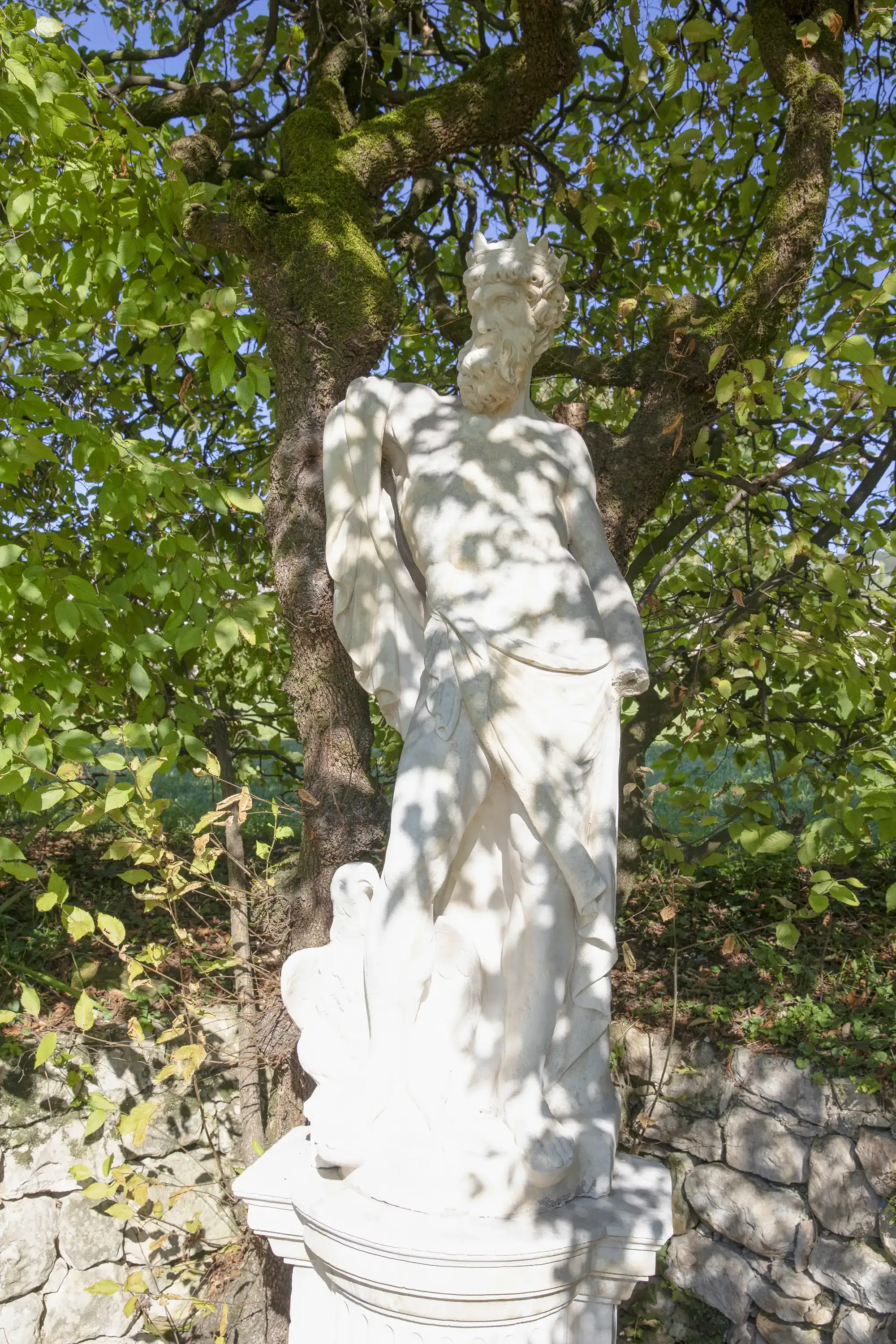
At the centre, we find a statue depicting Jupiter, the king of the gods, a solemn, majestic figure with a crown on his head and accompanied by an eagle, symbolizing the highest reaches of the sky.
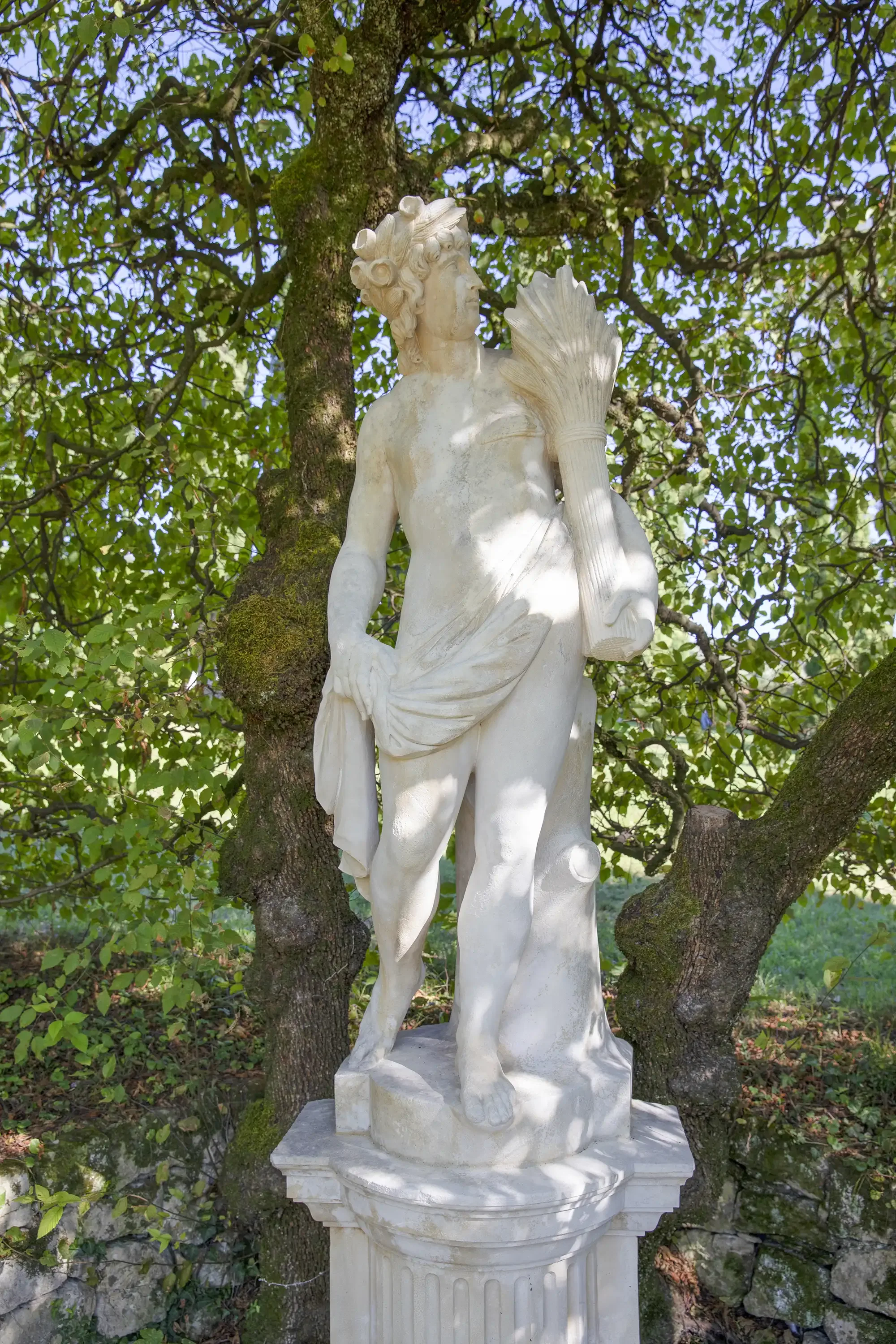
To the right of Jupiter, a statue depicts Ceres, the goddess of the land and agriculture, wearing a crown of flowers on her head and holding a sheaf of grain in her hand.
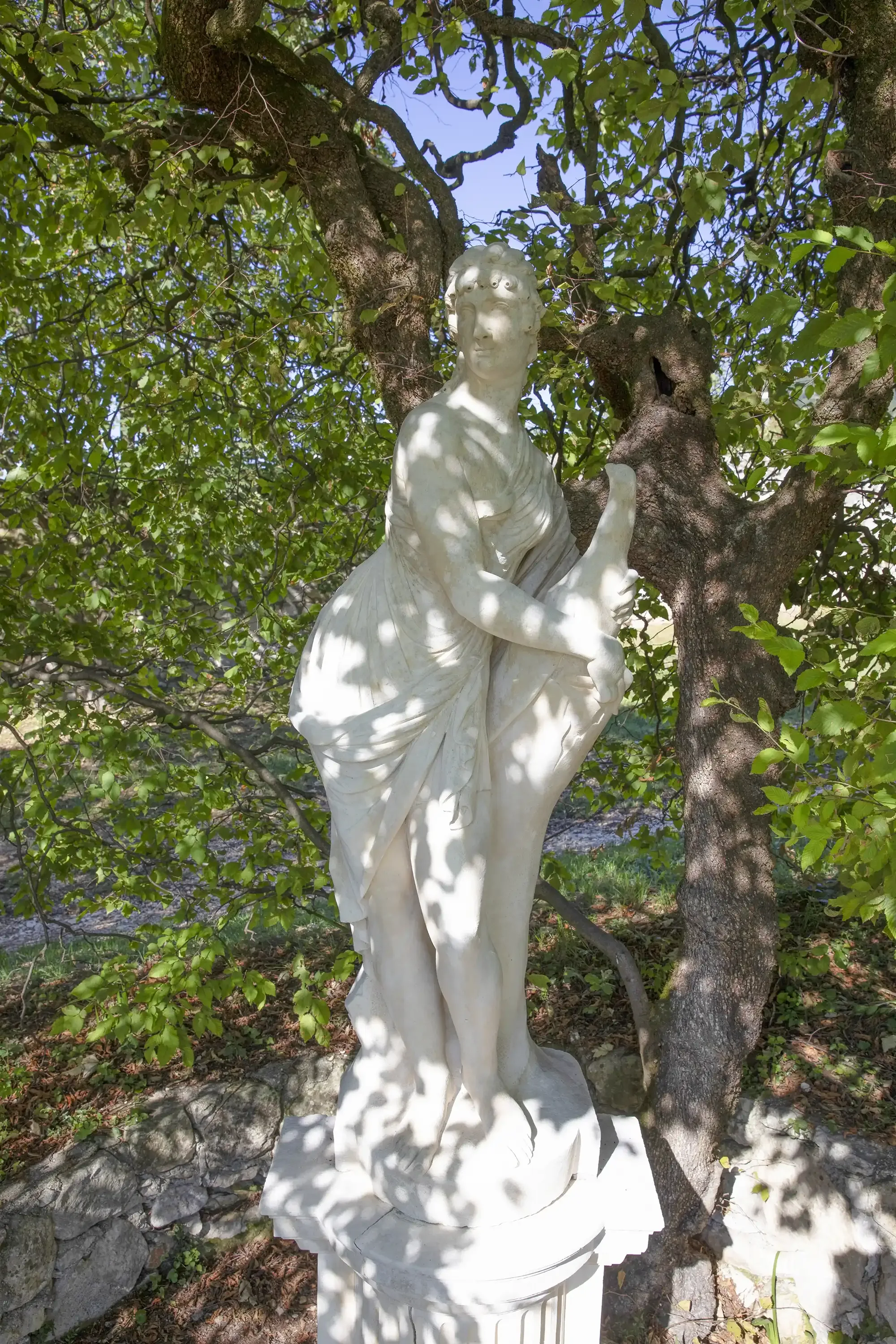
To the left of Jupiter, we find two playful putti, then a statue of his wife Juno, queen of the gods and a symbol of conjugal fidelity. She is depicted with a peacock, a sacred animal for her, whose tail studded with a thousand ‘eyes’ represented the starry sky.
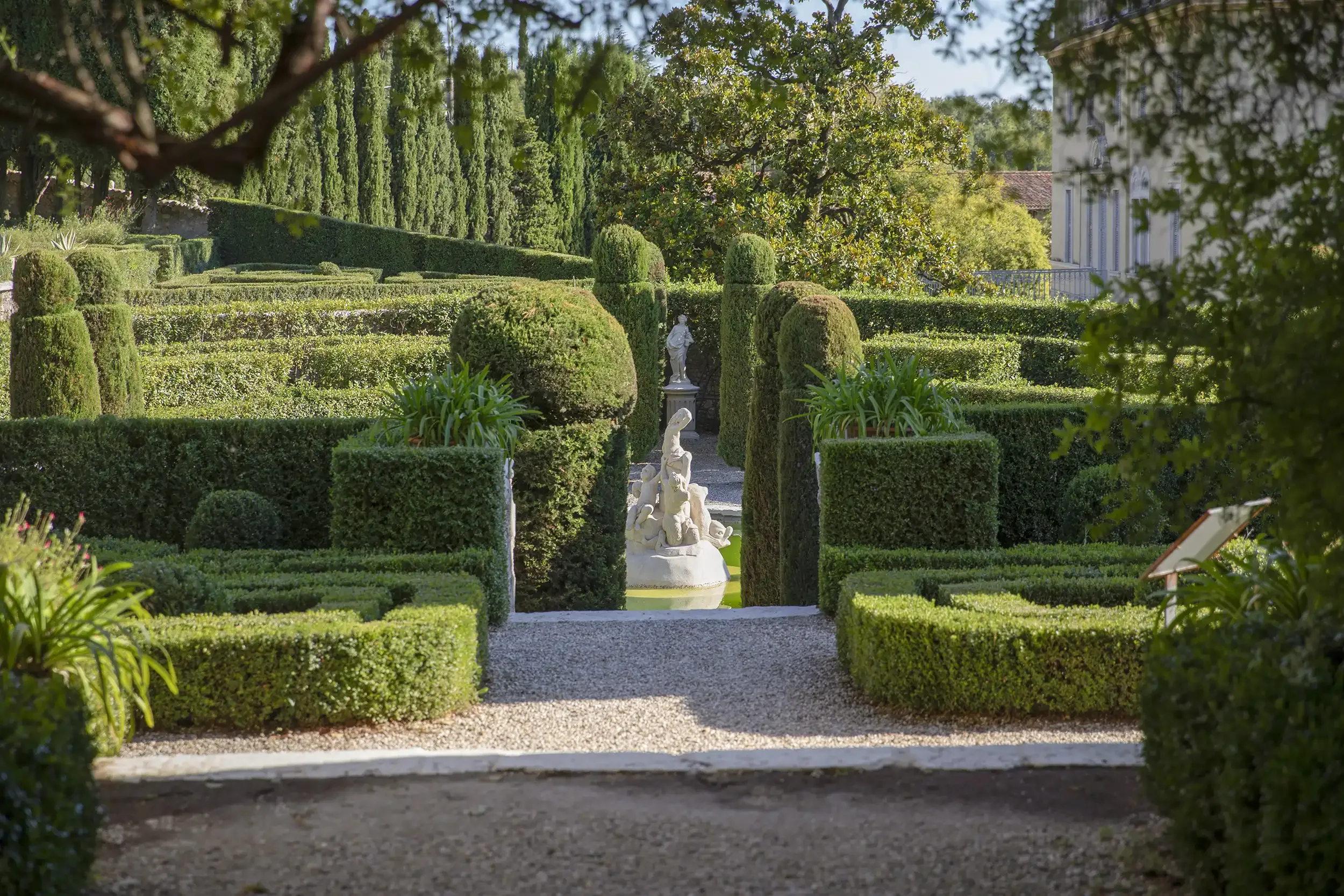
The statue at the centre of the pond celebrates the element water: the girl at the centre is Water, surrounded by amphorae, dolphins, and Tritons.
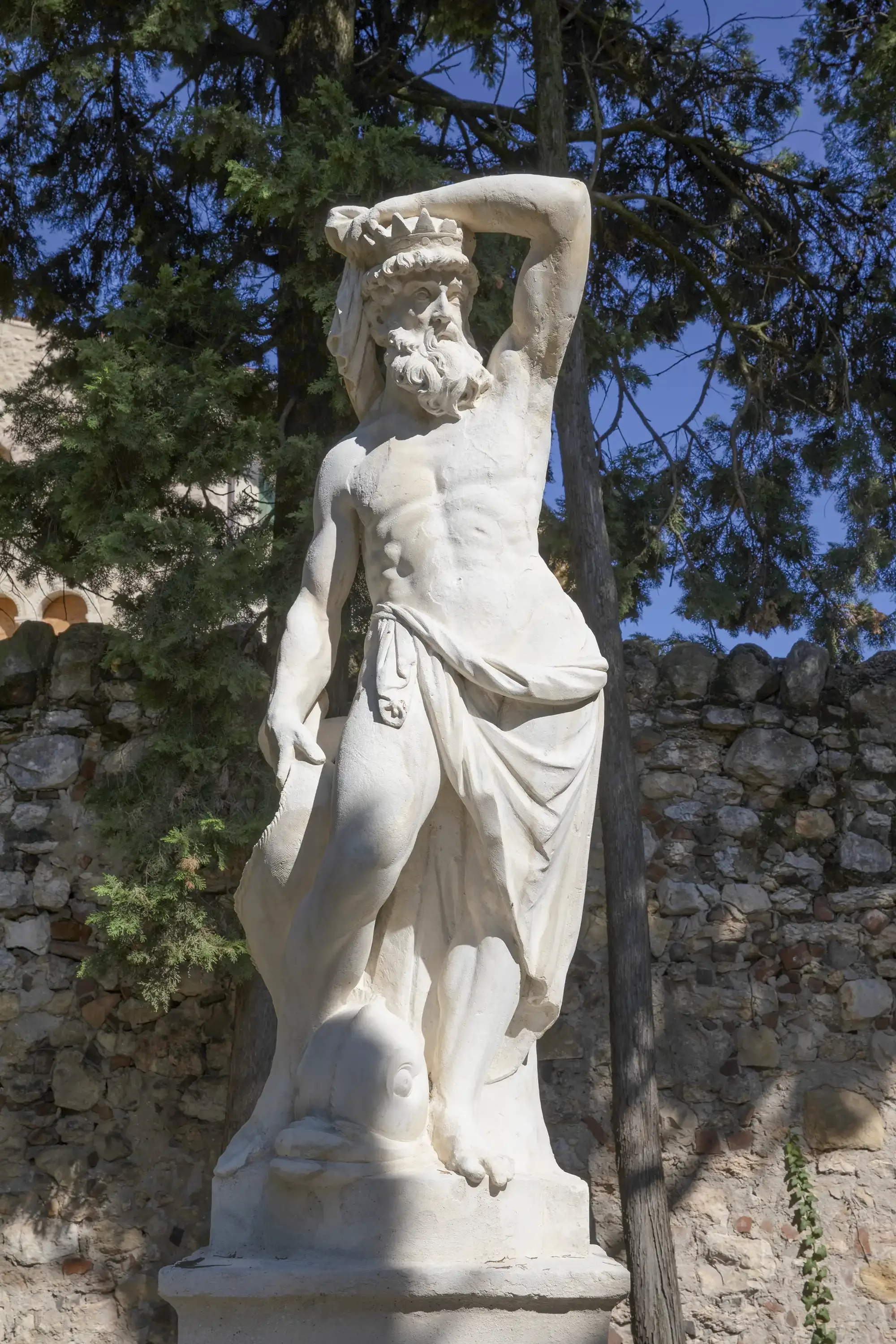
Neptune, the god of the sea, takes the shape of an impressive, mature man, with beard and flowing hair, crowned head, and accompanied by a dolphin.
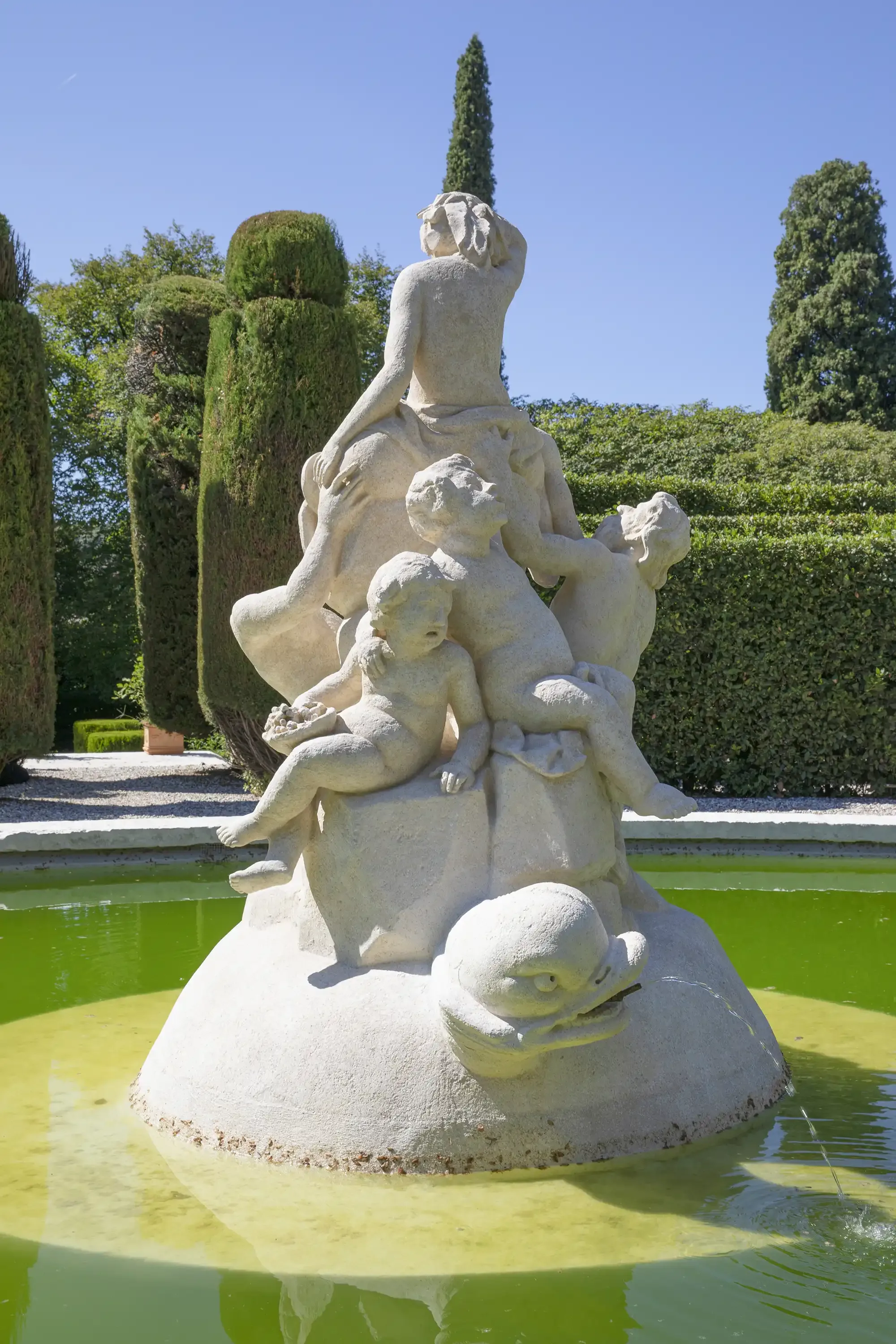
This composition represents Water, personified by a young woman seated on a rock and holding an amphora that spouts water. The dolphin below symbolizes the sea, while the putti mean that water is the principle of everything and the source of life. Kneeling at the woman’s feet, two Tritons pay homage to the most important of the elements.

The pond is surrounded by ‘walls’ of bay tree which form galleries, niches, and an exedra containing another statue. This one, which does not seem to relate directly to the context, depicts a woman dressed in an elegant draped tunic, with a crown of laurel on her head and an open book in her hand. It may be an allegory of Knowledge or Intellect.
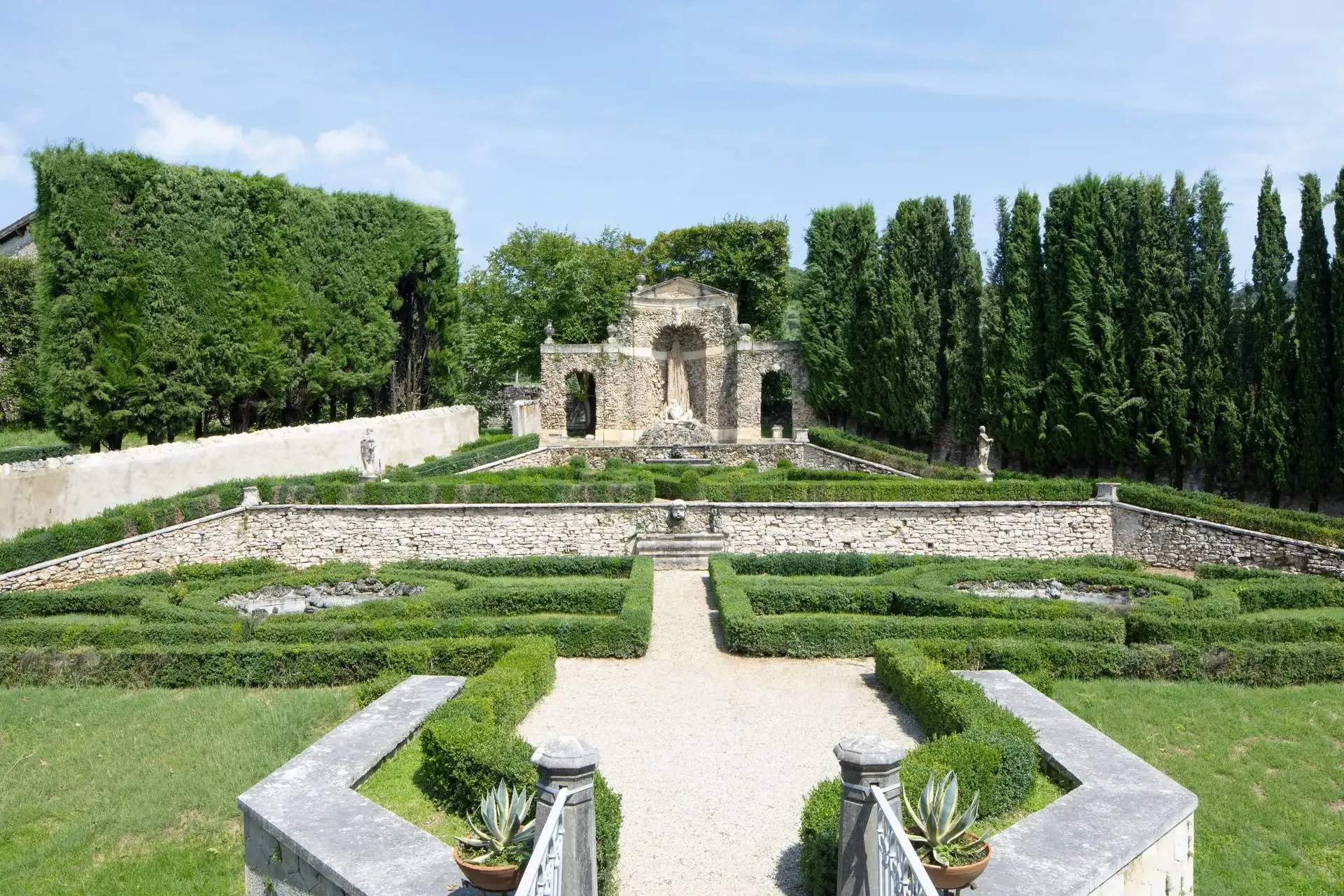
Two fountains are located at the centre depicting two small reclined Tritons with springs of water spouting from their mouths. Another two fountains along the central axis of the garden consist of large masks set above stone basins.
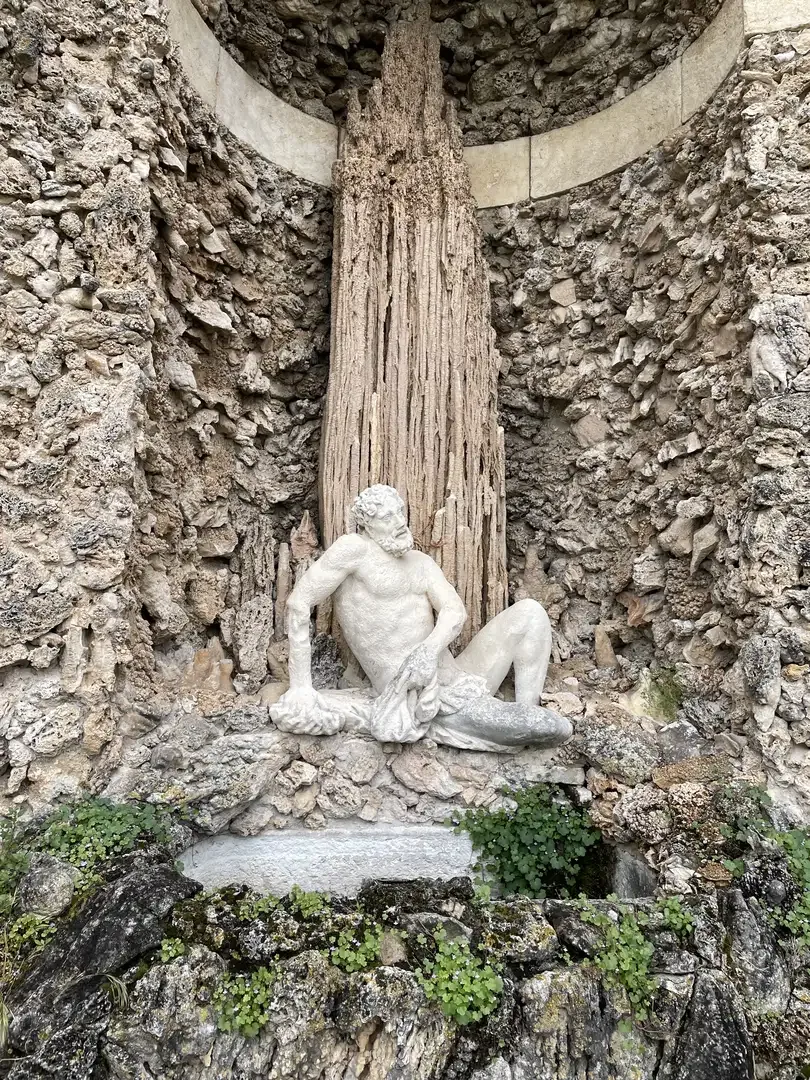
At the centre of the nymphaeum at the edge of the basin is a statue depicting a river god. In a slightly reclined position and covered only with drapery that recalls ripples on the water, it was damaged at the head. According to traces remain on the chest, it should have once had a long, flowing beard.
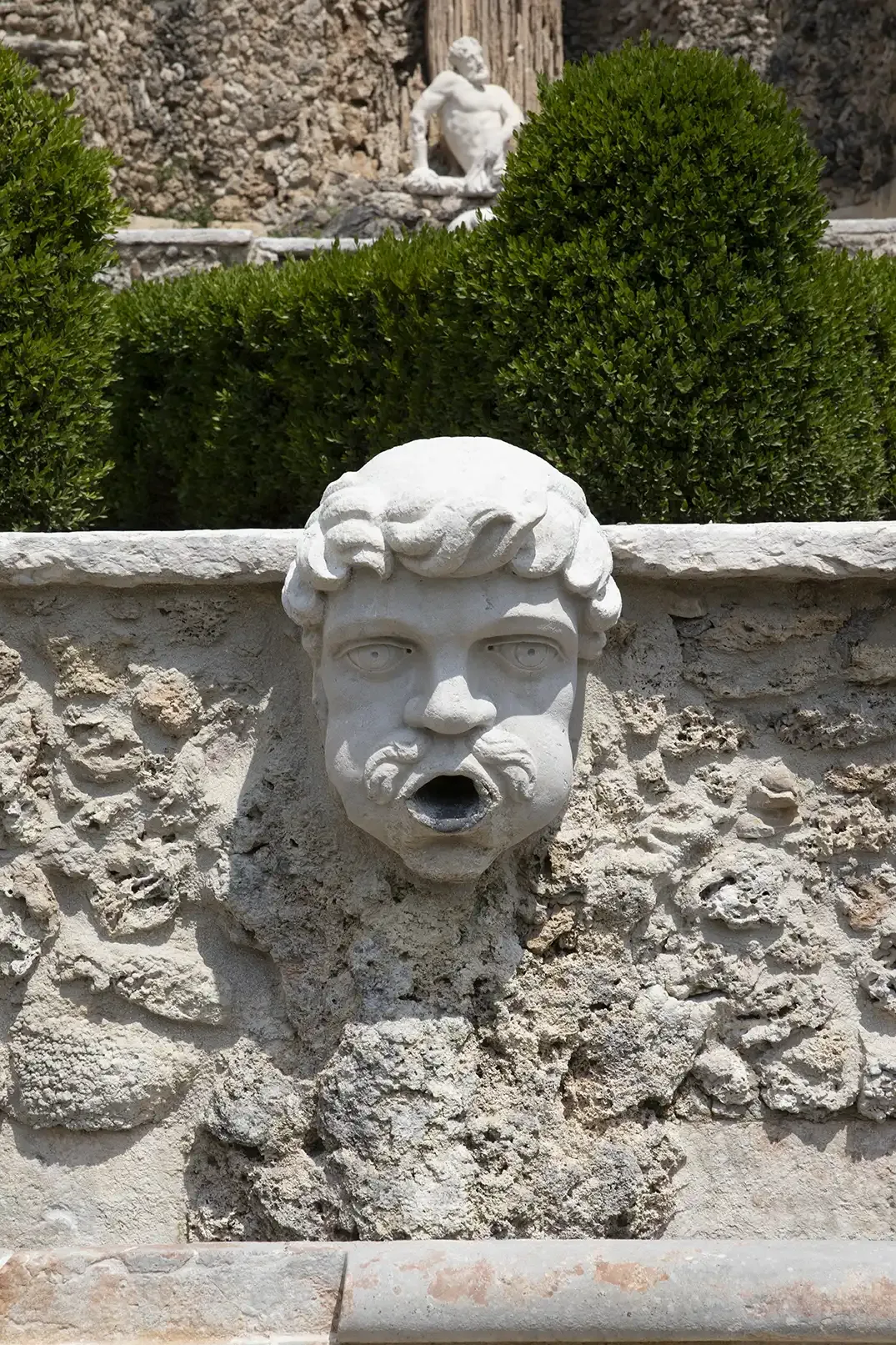
In the nymphaeum, an ornament with mask sits above the central basin of the composition, with water flowing from its mouth.
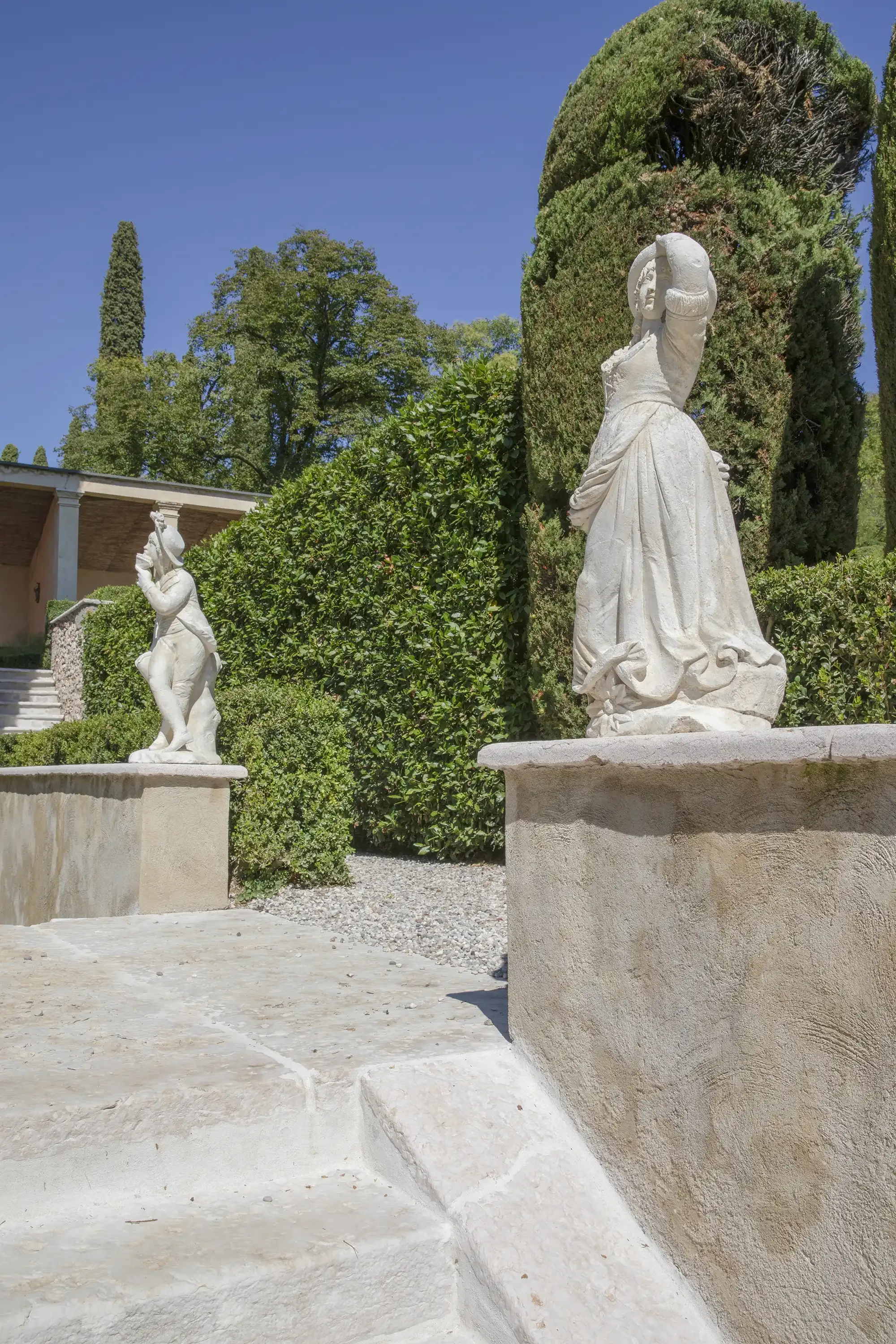
At the entrance to the stairway are two statues depicting a youth and a lady wearing period clothing, in contrast to all the other statues in the garden (dressed in classical clothes). The two youths seem carefree, and their hair is interwoven jokingly.


